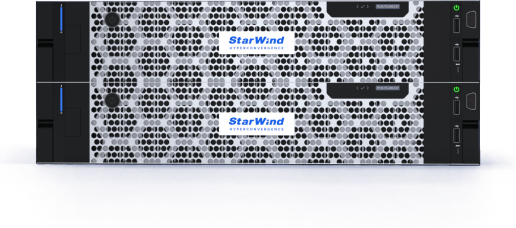In case you haven’t heard as of yet, Microsoft announced that the standalone Remote Desktop client for Windows is being deprecated. The client is reaching the end of its support lifecycle. The date, March 27, 2026, is the cutoff date. Even though this is happening next year, IT admins and organizations should start planning to switch over to Microsoft’s new preferred too, the Windows app.
Let’s take a look at the details of this deprecation of the Remote Desktop client and see what organization admins should be doing now to plan to transition over to the new app to continue accessing Azure Virtual Desktop, Windows 365, and Microsoft Dev Box.
End of support for the Remote Desktop Client
If you are not familiar with the Remote Desktop Client, we are referring not to the built-in “mstsc.exe” utility. This is the Remote Desktop (MSI) client for Windows that allows connecting to Azure Virtual Desktop (AVD), Windows 365 Cloud PCs, and Microsoft Dev Box environments. Most organizations are familiar with the tool if they have been using these cloud desktop resources from Microsoft.
However, starting March 27, 2026, this client will no longer be supported. This means:
- No new security or feature updates will be issued.
- The installer will no longer be available for download.
- Microsoft will officially stop recommending this tool for accessing cloud-based desktop infrastructure.

The legacy Remote Desktop Client

Another view of the legacy Remote Desktop Client
Why the end of support? Microsoft is moving into a more modern, cross-platform experience through the newer Windows App tool. A unified client is available now across the Windows macOS, iOS, Android, and web platforms.
The Windows App for Remote Desktop connectivity
The next solution for accessing Microsoft’s cloud solutions is the Windows App. It is the replacement for the end of life Remote Desktop client. What is different about this app compared to the legacy Remote Desktop client app?

The new Windows App for remote users to access cloud desktops
Unified access across cloud desktops
The older client required separate configurations or apps for different services. However, by using the new Windows App, you can have access to everything in a single app and interface. So, users can access desktops in Windows 365, use a Dev Box for development, or access desktops in Azure Virtual Desktop from the same UI. The Windows App gives you a single access point for all of these environments.
Redesigned interface that is improved
The Windows App includes the following features and characteristics:
- Customizable home screen for organizing desktops and apps
- It supports multi-monitor setups
- You can have dynamic display resolution and scaling
- It has redesigned session controls and user navigationAll-in-all, its features mean a better experience for remote users.
Improved features compared to the Remote Desktop Client
Microsoft has also integrated several improvements to help users with productivity. These include the following:
- Microsoft Teams will feature audio/video optimizations in the new app
- USB and device redirection is more powerful
- You will have support for multiple user accounts
- There will be faster switching between desktops and environments
For hybrid work, this will see many gains in productivity and user experience compared to the old app.
What about good old MSTSC?
There has been some confusion with this recent announcement from Microsoft. If you have been around for some time as an IT pro, when someone mentions the Remote Desktop client, you are likely to think about the MSTSC utility. However, this utility is not being deprecated. This is the traditional, built-in utility that is found in the Windows operating system.

The built-in MSTSC utility
However, keep in mind that the MSTSC utility does not integrate with the cloud-based services like AVD, Windows 365, or Dev Box. So you won’t be able to use it instead of the new Windows app.
Known limitations in the Windows App
Microsoft is feverishly working to bring feature parity between the new Windows App and the traditional Remote Desktop client app that is used to access cloud resources. However, be aware that as of early 2025, you should note the following limitations with the new Windows App compared to the Remote Desktop client app:
- Proxy Server limitations: It does not support proxy/HTTP authentication
- Azure Private Link: Azure Private Link connections to AVD are not currently supported but is something that Microsoft has on the roadmap for the new Windows app
- Azure Government Cloud: Connectivity to Azure Government instances are not available as of yet
- Start Menu integration: Users can’t launch remote apps directly from the local Windows Start menu
- Single Sign-On with AD FS: Active Directory Federation Services for SSO is not available yet
- System tray session controls: Session controls like disconnect/reconnect from the system have not been added as of yet
- Windows 10 compatibility: The app does not support Windows 10 versions 21H2 and earlier, including LTSC variants
Microsoft is keeping up with the limitations of the current Windows app at the following link: Known Issues and Limitations. If you are planning your rollout of the new app, it’s a good idea to check this to see which features and fixes have been rolled out or are on the roadmap.
How to prepare to migrate over to the new app
Let’s now consider migrating over to the new app. If your organization uses the Remote Desktop client for accessing Microsoft cloud resources, now is a good time to start planning to migrate. Let’s look at the recommendations and steps for planning your migration.
Review Official Documentation
It is a good idea to keep pace with the official documentation found on Microsoft’s site here: Getting Started with Windows App guide. This documentation helps to guide you through the installation process and configuration options. It is also updated with the supported features.
For administrator-specific functionality and operations, there is an admin-focused guide that walks you through deployment and management for enterprise use.
2. Download and install the Windows App
Next, you will want to download and install the Windows App. To do that, you can download the Windows App either from the official Microsoft Store or as an MSIX package. The MSIX package is the download you will want to use with mass deployment tools like Microsoft Intune or Configuration Manager.
The Windows App is available via the Microsoft Store. The MSIX package is available here: MSIX package.
3. Test and evaluate the Windows App in your environment
Really, the first step will be for an organization to test and evaluate how the app works in their respective environments. You will likely want to pilot the new application with a subset of users to:
- Identify compatibility errors or issues
- Gather feedback from your users
- Validate network and identity settings needed
- Document the ins and outs of the new app
Be sure to test against all the remote services you currently use in the Microsoft cloud, including AVD, Windows 365, etc.
4. Monitor your client usage with the new app
Microsoft has a tool called Azure Virtual Desktop Insights. It helps you identify and monitor your client versions and track which app is used across your organization. This tool will help during the transition and pinpoint users who are still using the legacy Remote Desktop client.
Windows 365 client version telemetry is coming in the near future as well. You can view the documentation available in Microsoft’s Client Version Usage docs.
5. Uninstall the Remote Desktop Client
After you have migrated all users and the new app has been thoroughly tested, you can begin the process of removing the Remote Desktop Client from end-user devices. There is also a way to use PowerShell to uninstall for both users and devices.
Make sure to have a contingency plan available if issues are encountered with the new app. It is a good idea to have the legacy app installed until all users have thoroughly tested the functionality and have no issues using the new app moving forward.
Wrapping up
Admins need to mark their calendars for the important date of March 27, 2026. However, it is too late to wait until changing over at that time. Planning and testing needs to start now to discover any potential issues before next year. Microsoft is adding features to the new Windows App that will make it the de facto tool for accessing all of your cloud resources.
However, there may be some bumps in functionality along the way. Organizations that rely on Azure Virtual Desktop, Windows 365, or Microsoft Dev Box will need to start testing and transitioning now. Once the new app matures, it will offer a superior experience and seamless experience to access all cloud desktop environments from a single tool.


